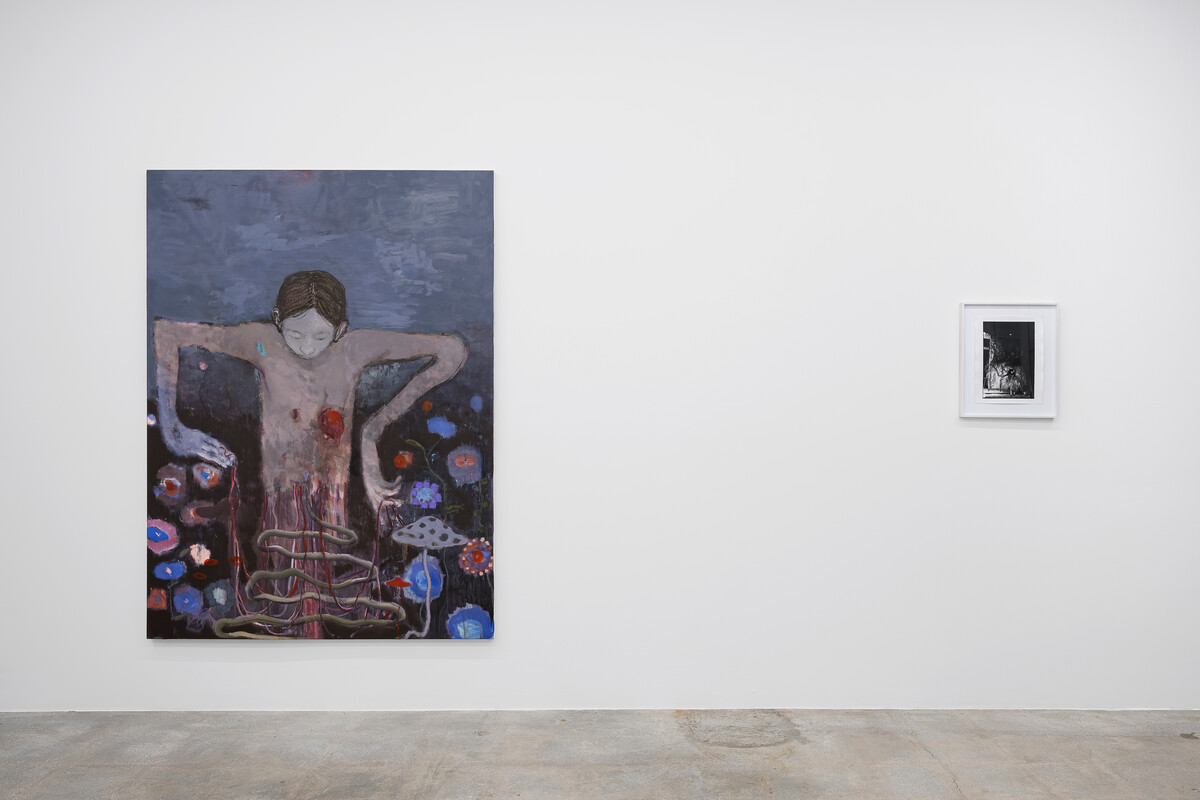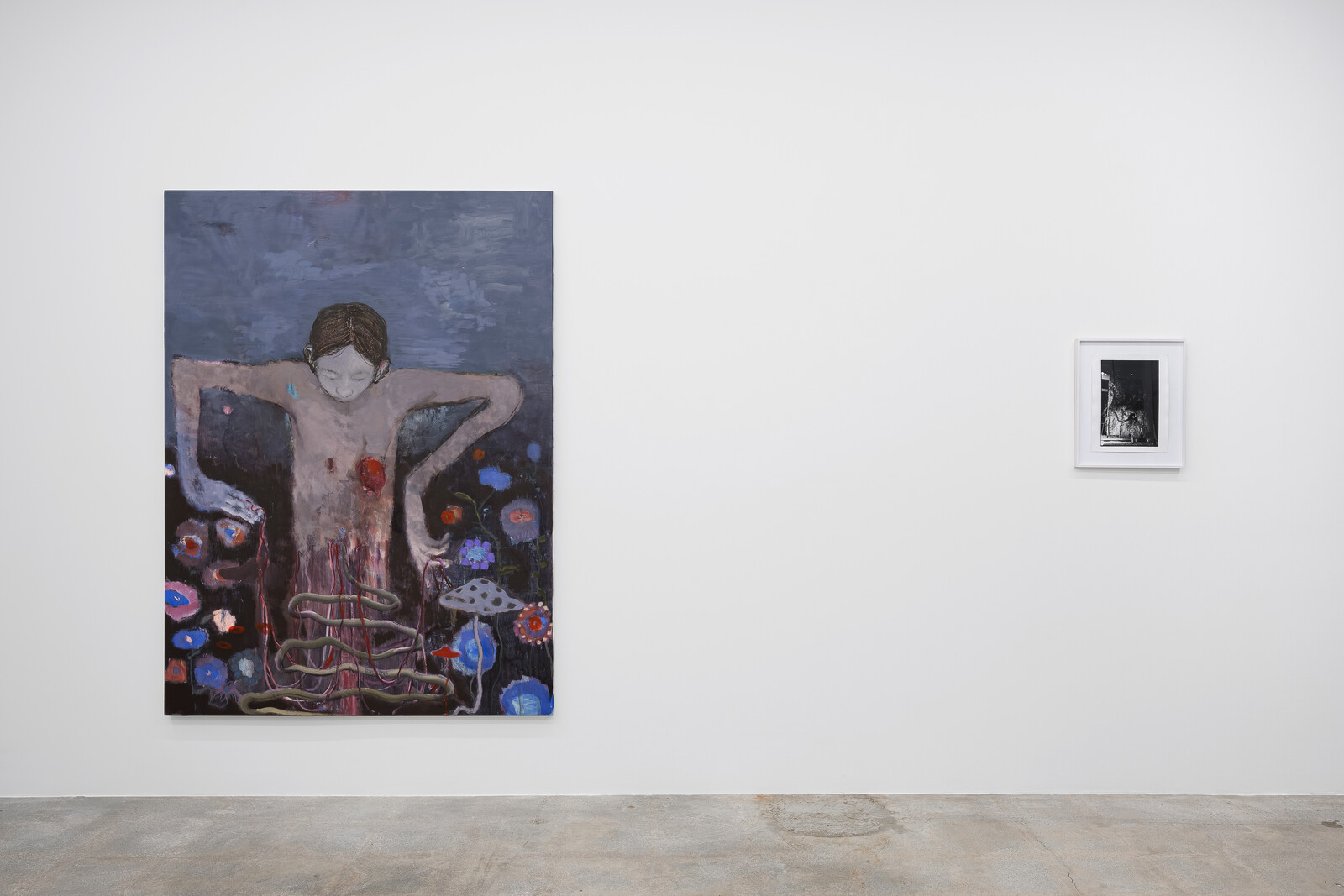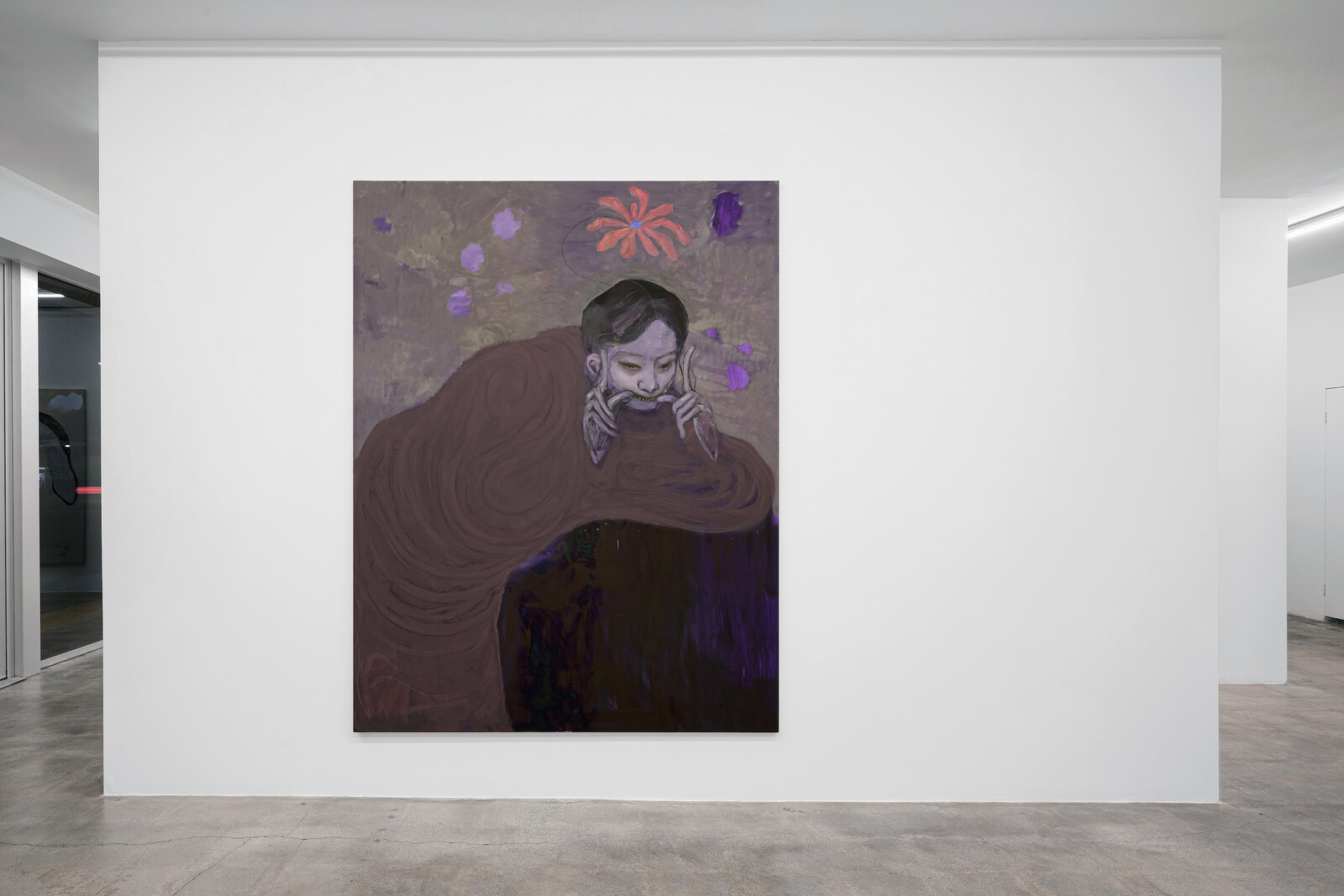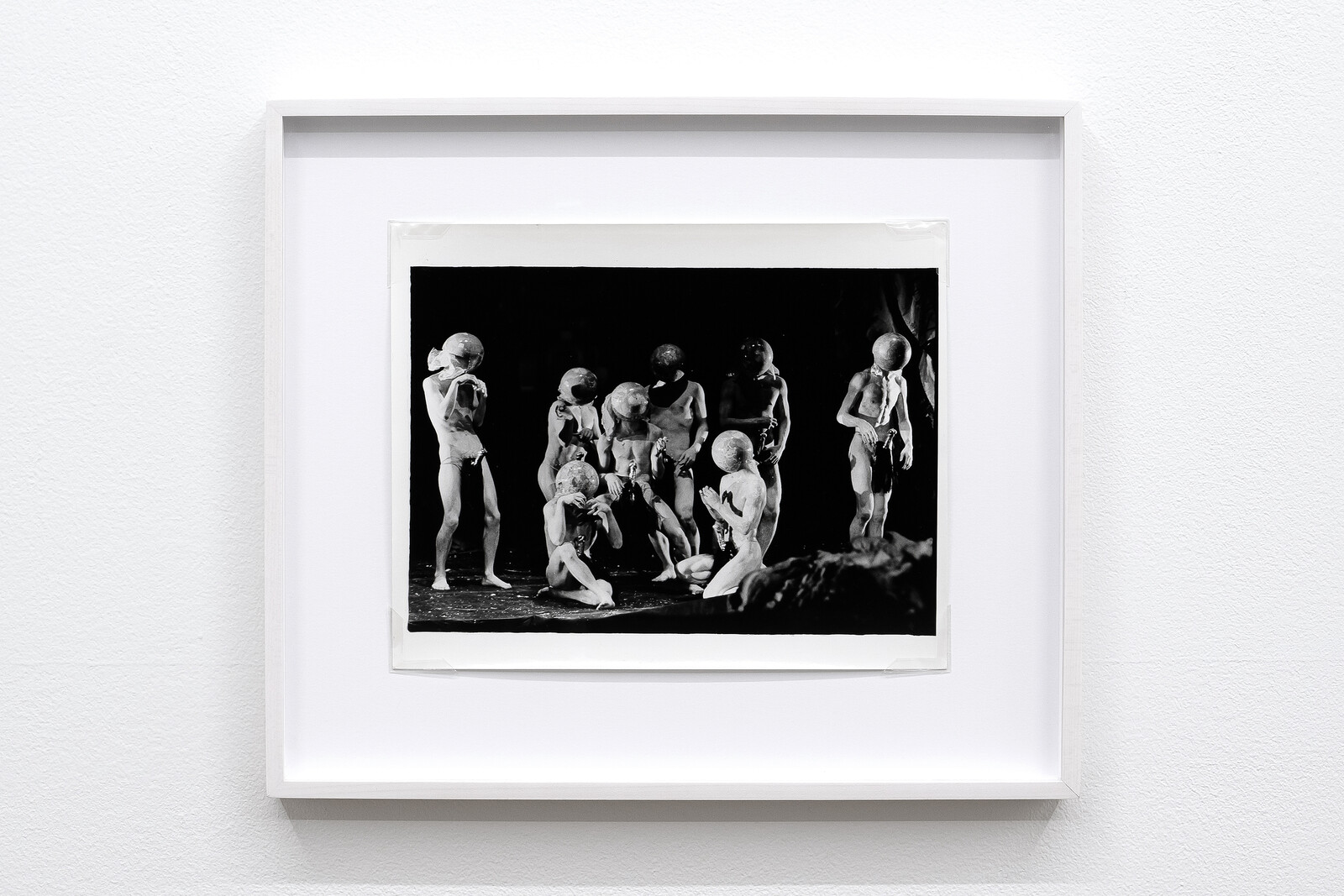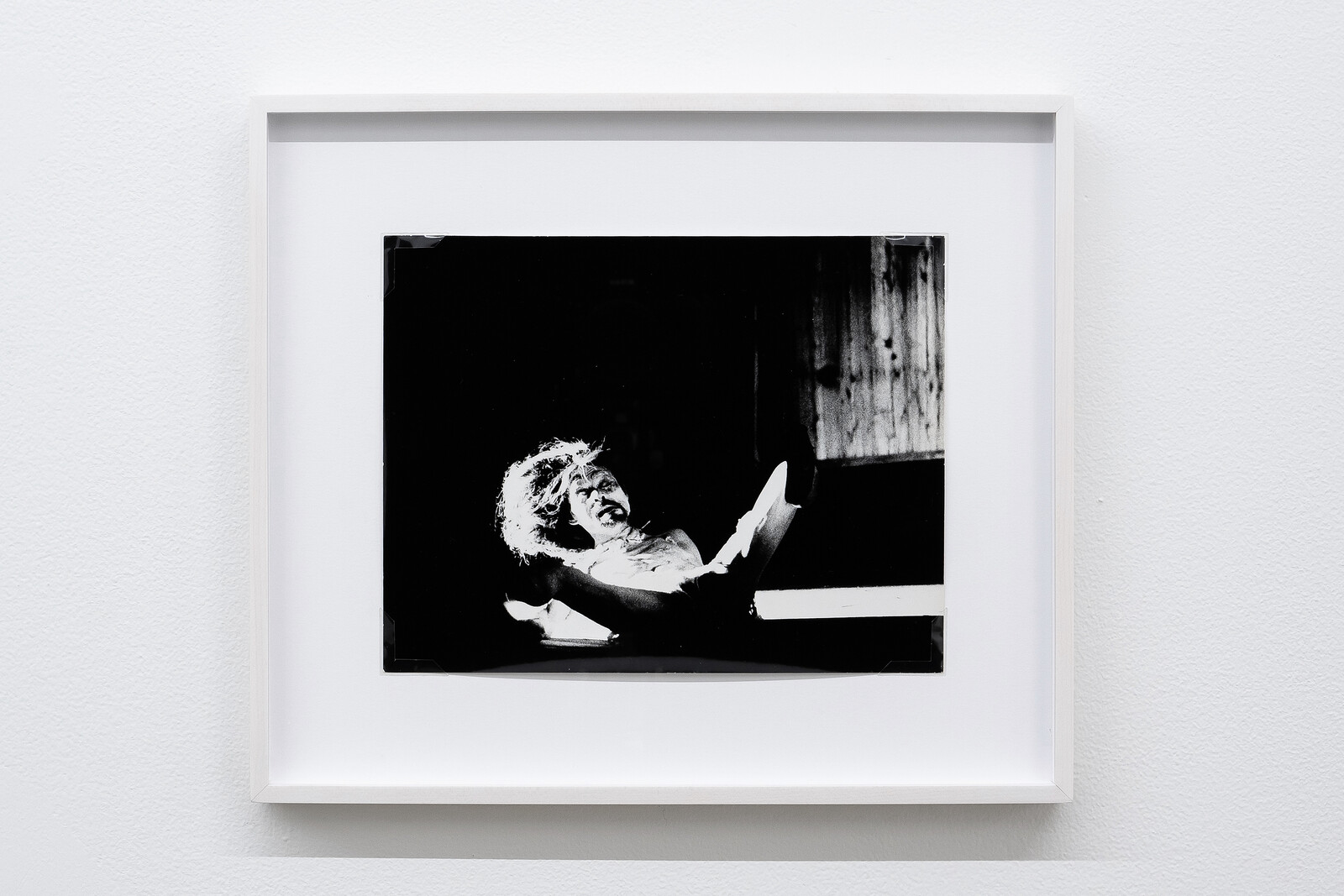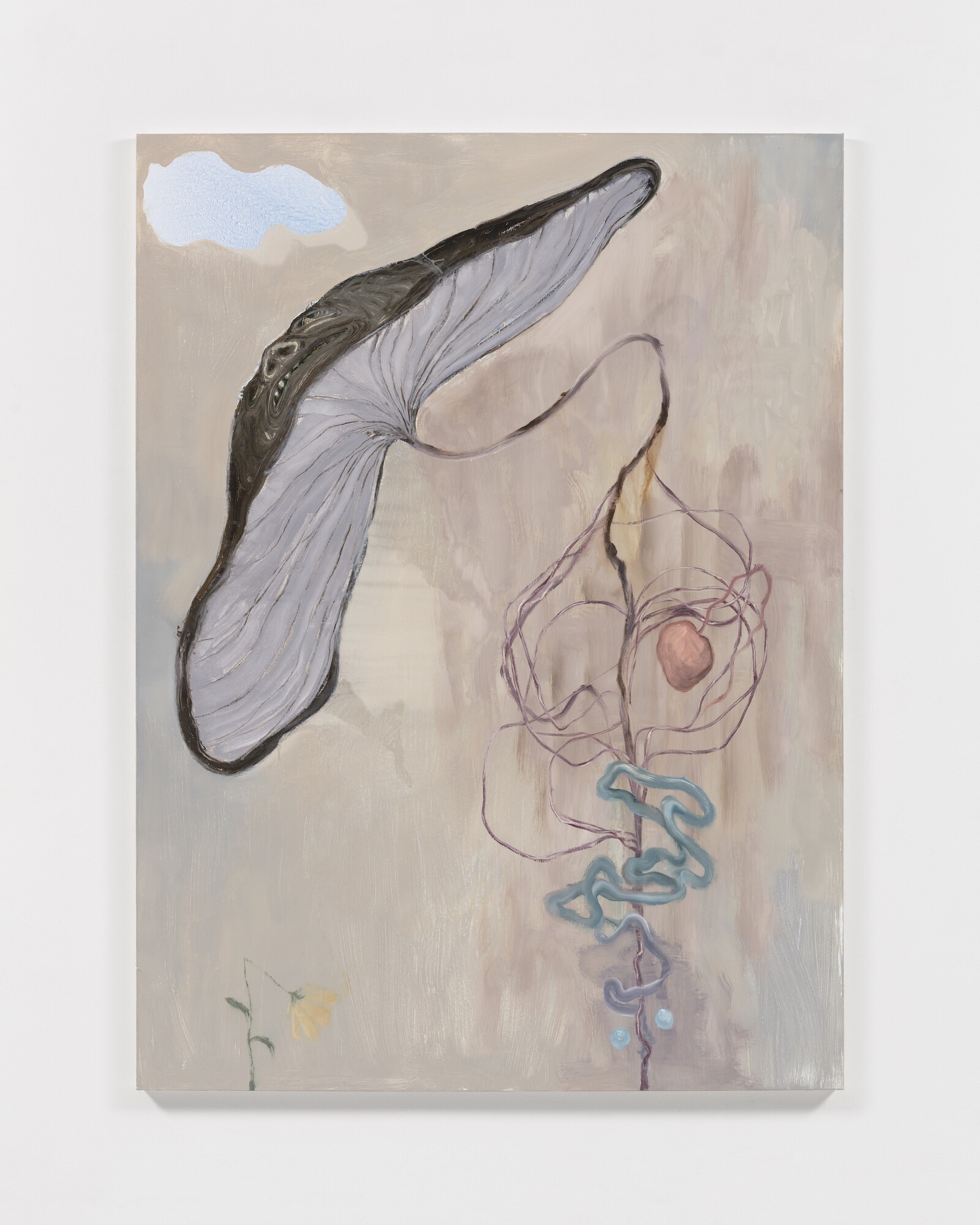Tatsumi Hijikata spoke with his entire body. At Nonaka-Hill, Yasuo Kuroda’s photographs of his performances of Butoh—the form of dance theatre he founded in postwar Tokyo—are displayed alongside new paintings by Sanya Kantarovsky, advancing the latter’s interest in Japanese folklore and traditions. The subjects on the canvases resemble the dancers in the photographs, as if painted from hazy memories or fever dreams. Though not directly depicting the same figures or moments, the two approaches to image-making are complementary: both capture the depths of estrangement, enveloped dislocations, and solitary sorcery of performance.
Each lone figure in Kantarovsky’s paintings expresses a different facet of pain. No Longer a Dog and I am a Body Shop (all Kantarovsky’s works are dated 2023) show figures who mirror traditional Butoh performers, turned away and covered in the Japanese white paint of mourning over their faces and limbs, ribs visible through their nearly translucent skin. In Bleeding Nature, the dancer suffers from the kind of wound that a Butoh dancer might feel in phantom form: an open gash over a bloody heart. Their bottom half disintegrates into ribbons, dangling from their fingertips and torso into a swirl of entrails that fertilizes a surrounding field of flowers and mushrooms. Secret Channels most closely anticipates the compositional tropes of portrait photography. Hunched over against a lilting floral backdrop, the elongated figure stretches their mouth into a pose. The fantastical Growth X discards the figure altogether, showing organs without a body instead of Deleuze and Guattari’s body without organs (BwO). An oversized mushroom cap, animated facial features only visible from a chin-up angle, floating above a delicate tangle of artery, intestine, and appendix threads.
Hijikata pushed himself to the limit both physically and emotionally. He invented words to fit concepts, imagined despair into movement and reaction into image. His “dance of utter darkness”—a direct translation of Ankoku butō, as the form was originally called—pulls from German expressionist dancer Mary Wigman, acupuncture guides, Antonin Artaud’s punitive Theatre of Cruelty, the BwO, Surrealism, Dada, and the painful contortions in the writings of the Marquis de Sade and Jean Genet. Kuroda was a photographer who became a regular at the Asbestokan, or Asbestos Hall, the Tokyo studio space in which Hijikata practiced and welcomed other artists. Hijikata invited him to document a series of dance works in 1973, including Quiet House and Yobutsu Shinto: his last public engagements before his death in 1986. “I would like to make the dead gestures inside my body die one more time and make the dead themselves dead again,” Hijikata once said. “I would like to have a person who has already died die over and over inside my body. I may not know death, but it knows me.”1
Kuroda’s photographs catch the physique as it repositions itself inside the highly charged negative space of the theater, releasing distress, accruing aches, or fighting motion in a dance of the nervous system more than the muscles. Executing the natural movements of farmers and victims of malnutrition who lived in his native Tohoku in the Akita prefecture, Hijikata’s slumped positions onstage, with legs stepping out sideways, recalled the posture of patients suffering from polio and scoliosis. The figures lurking in the deeply pigmented blacks of the monochrome prints seem to recess even deeper into the picture, further alienated from their surroundings, and from us. Quiet House utilized what the performer’s “vaporized” frame—his own BwO, moving onstage without being limited by the contours of the skeleton or the responsibilities of each organism’s duty; the anatomy could be a cloud of vapor, not a web of skin, bones, and organs holding each other up and back. Kantarovsky’s paintings illustrate Hijikata’s spiritual reach to disembodiment, where the body in demise was now set free to become anything—air, a stone, mushrooms—and not only a body in another position.
Butoh’s concern with death and decay extends to training regimens that include extensive sleep deprivation and starvation. Butoh, as Hijikata often remarked, “is a corpse standing straight up in a desperate bid for life.”2 Another of Hijikata’s legacies is butoh-fu, a choreographic terminology to help dancers catapult themselves into other realms and communicate what words could not. To capture a single movement that gives and takes many perspectives at once is an aim shared by Kuroda’s photographs, Kantarovsky’s paintings, and butoh-fu. Together, they give us something that no single image could.
Hijikata Tatsumi, “Wind Daruma,” TDR, vol. 44, no. 1 (Spring 2000): 71–81.
Hijikata Tatsumi, Hijikata Tatsumi: Three Decades of Butoh Experiment (Tokyo: Hijikata Tatsumi Memorial Archive, 1993), 58.
